The Wilderness, 30 Repps Road, Martham
Firstly, I would like to thank Bob & Mary Porteous for generously sharing information about the history of their house without which this page could not have been written. The house was not known as The Wilderness until about 1883 when it is thought it was named as that by Selina Barber, nevertheless I will refer to it as that throughout for continuity reasons.
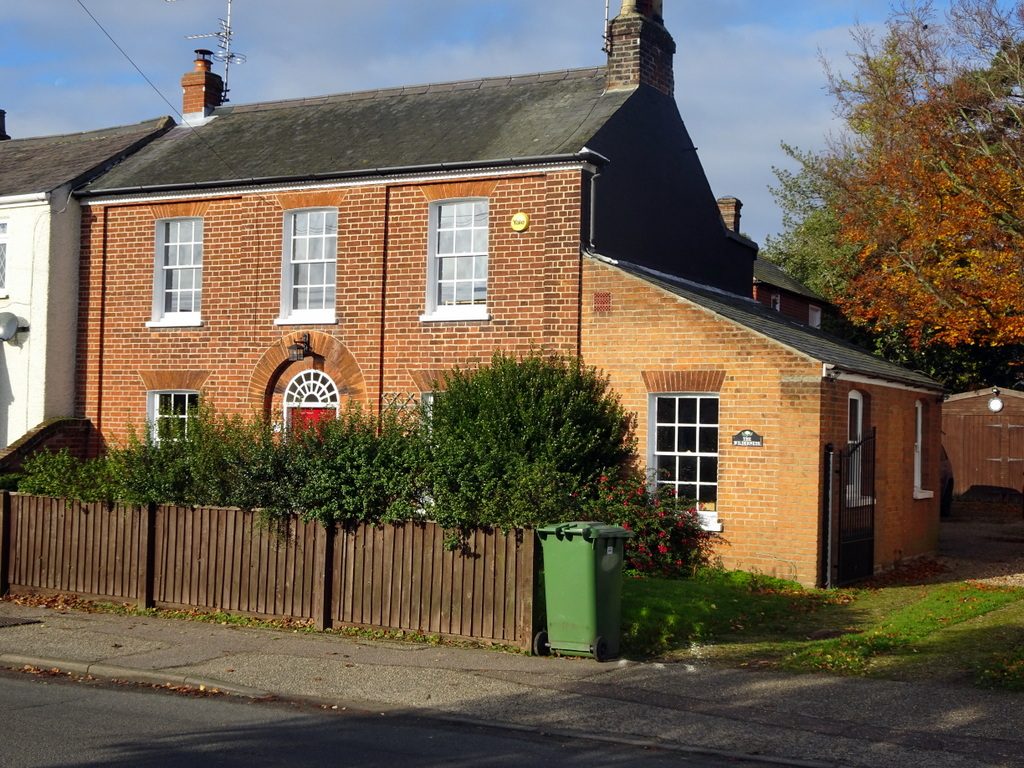
The house was built between 1854 & 1860 and is a very good example of the transition that was happening in Martham at that time. There are no clean breaks from one style to another in architecture but before this period many of the houses in the village would still have been of a poor structural standard of wattle and daub with thatched roofs occupied mostly by farm workers. More substantial houses surrounded The Green where many of the wealthy people and landowners lived. By the mid 19th century, the growing population was giving rise to demands for additional services which were fulfilled by a more enterprising set of middle-class people. The Wilderness was a typical example of the growth of the village spreading out from The Green along Repps Road which was then the leading highway (although it was only a lane) entering the village from the west. Here we find the brick-built homes typically occupied by the new self-employed middle classes providing services like brickmakers, cobblers, doctors, plumbers, publicans, tailors and vets etc.
The Wilderness was built only about 25 years after Victoria came to the throne but still has Georgian influences whilst perhaps trying to be more economical with building costs. It has a central front door and rounded semi-circle, spider-web fanlight. It has set-back, brick panels that gently emphasise the window areas and pseudo-brick columns each side of the front façade. The symmetrical windows have ‘Jack’ arches over all six windows to the front façade that are made of individual wedge-shaped bricks held in place through compression. The Martham red bricks have been laid in Flemish Bond form. The house was built hard-up against, but set back from, No32 ‘Loxwood’ to allow enough room for horse and carriage access through to the rear where there was a gig house and stable. The gig house has since been sympathetically converted into a kitchen and the stable has become a workshop.
The present owners of our house have a wonderful collection of deeds that together surely make up one of the most important sets of property documents in the village covering the period from the late 1700’s to present day. Two of the early conveyances in particular list all the changes of ownership (Abstract of Title) in great detail going back to before the house was built. They provide gems from the past!
Clamps Close
In one document we are told that in April 1792 the land our property stands on was once called Clamps Close and that ownership was transferred by lease from Francis Columbine to John Ellis & John Carrier, yeoman of Martham. Clamps Close was described as being three acres & twelve perches in size and was situated between land owned by Diana Creasey on the north side and the King’s Highway (Repps Road) leading from The Green to Repps on the south side. This can be corroborated by looking at the 1812 Inclosure Award map shown below. Clamps Close is shown outlined in red; land belonging to Diana Creasey is in purple and Repps Road is in green. Houses are shown in black blocks so our house did not exist in 1812 and Clamps Close was just a meadow.
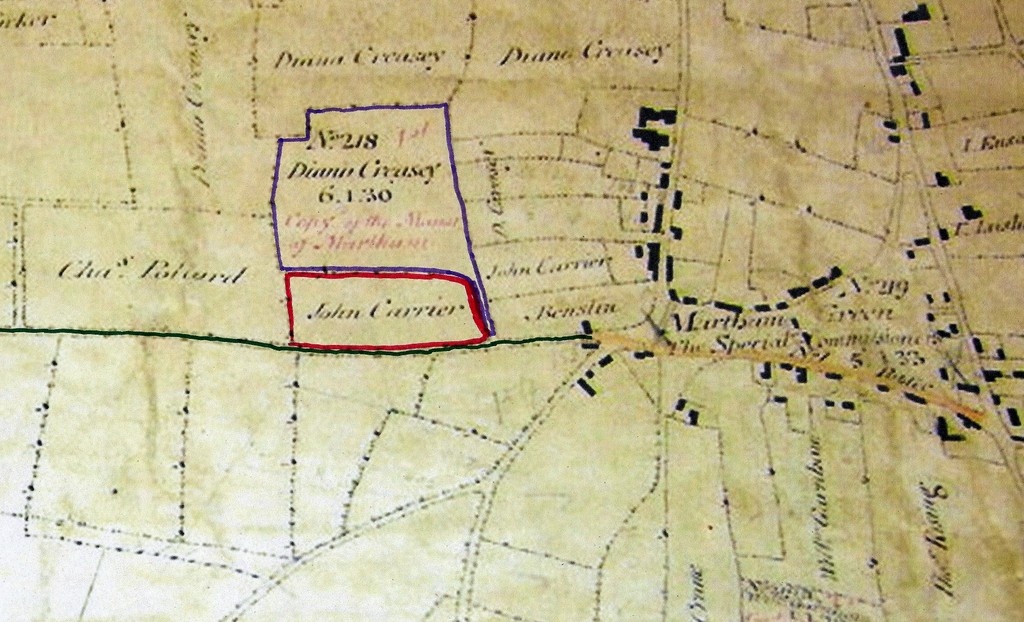
Further documents held amongst the deeds of our house show that a Mark Pratt had purchased the land our house stands on at Clamps Close in November 1822 from John Carrier and Thomas Bowman a merchant of Great Yarmouth. It seems that Thomas Bowman held a small rent charge over the land and that Mark bought it out as well as paying John Carrier £150 for Clamps Close. The documentation also includes a note that Mark had married Mary Drake on 18th January 1785 and that he was a glove maker. An extract of the Abstract of Title is shown below. Mark made a will on 24th November 1824 and died in 1832. Under the terms of his will Mark left all his estate to his wife Mary.
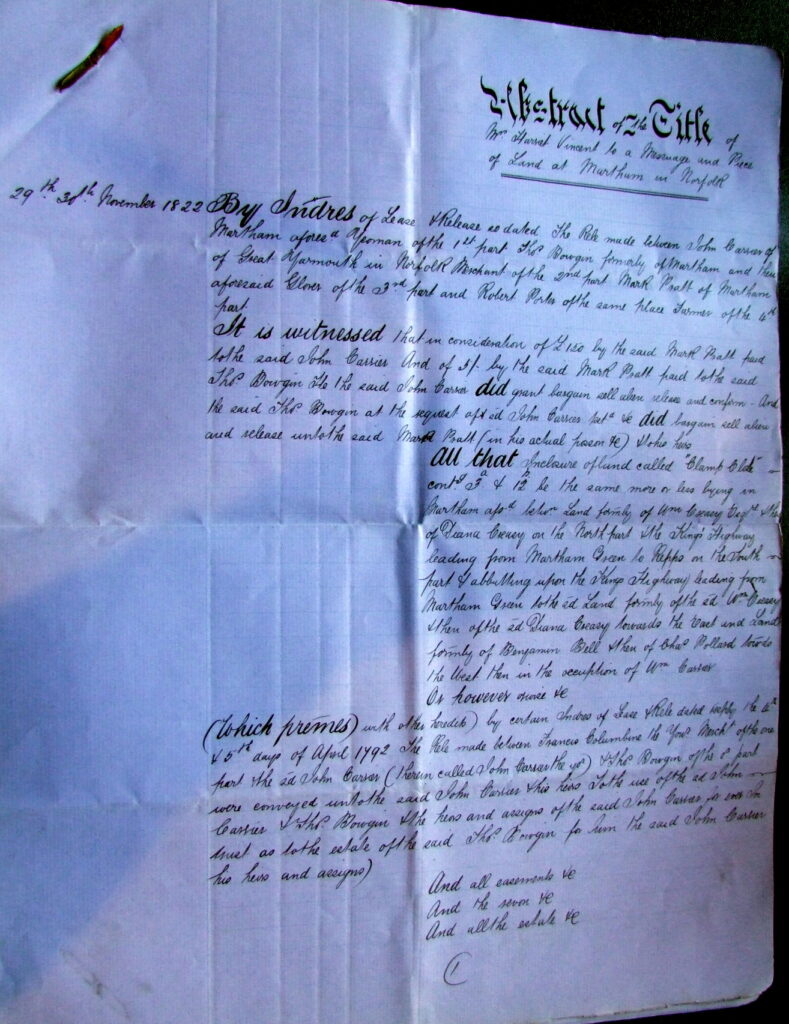
National events then catch up with local ones when the first national census was carried out in 1841 and Mary can be found living in a cottage at Black Street with two of her daughters called Mary and Rebecca. She was living on independent means at the time which would have included rental income from the land she still owned at Clamps Close. This is confirmed in the 1842 Martham Tithe Award which lists her as being the owner of plot 49, being Clamps Close, and that it was let to John Gedge. A copy of part of the 1842 Award map is shown below with the plot outlined in red and the cottage that she owned and lived in outlined in purple being plot 689a.
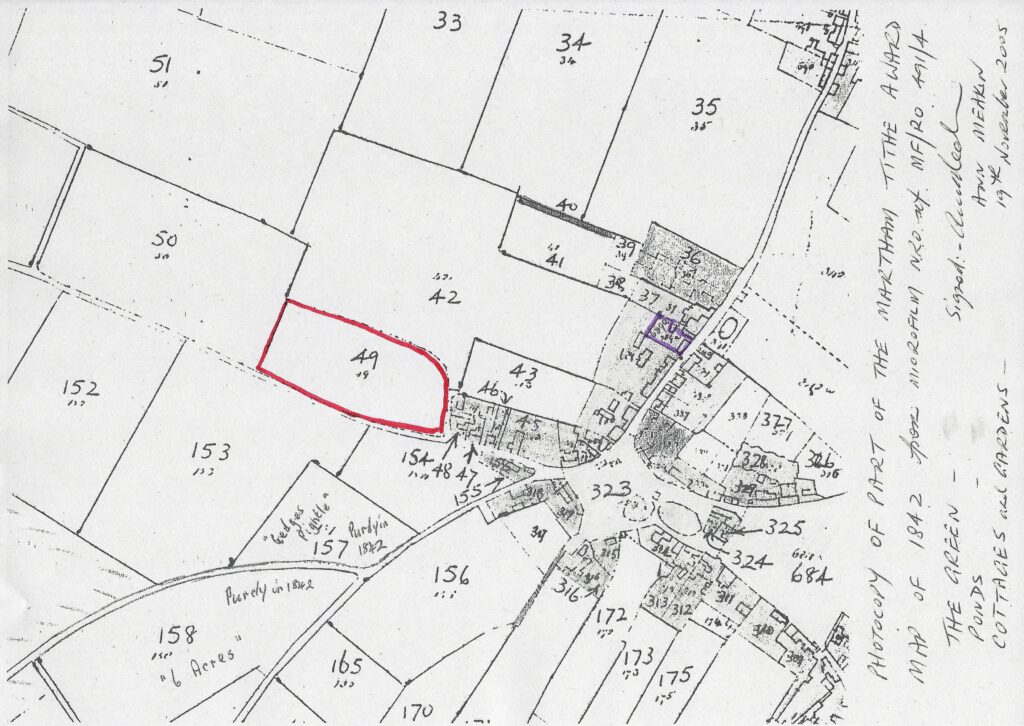
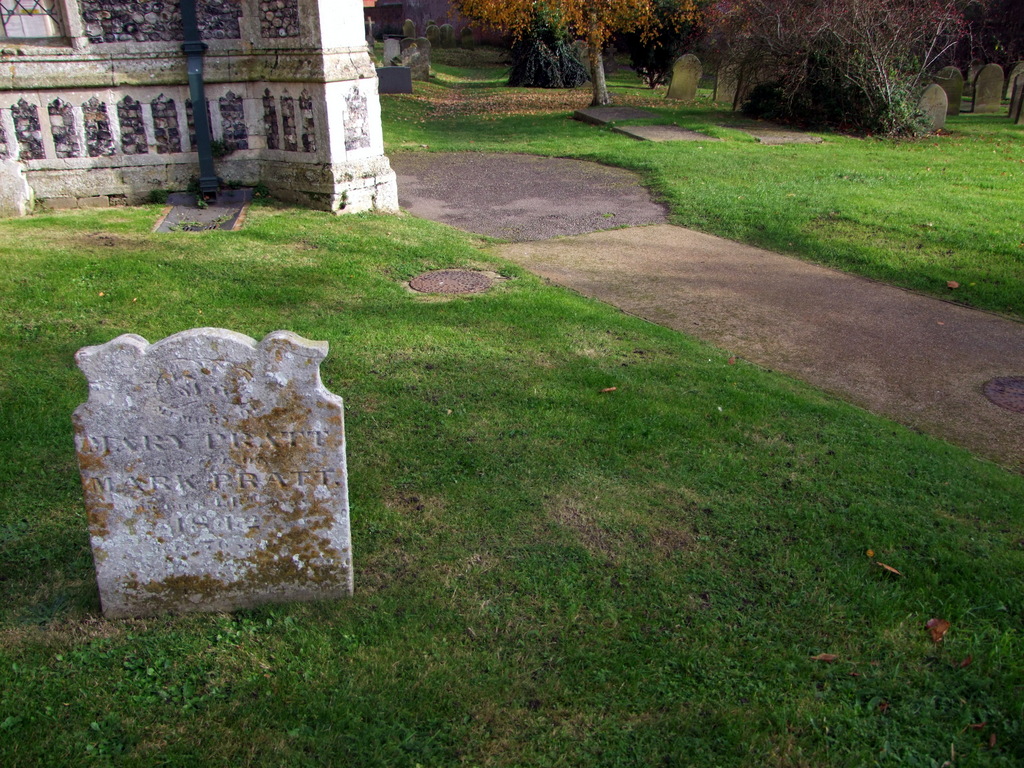
Mary died in July 1842 only a few months after the Tithe Award was drawn up and she is buried at St Mary’s along with her husband near the main door in section C of the graveyard. Mary has a gravestone, shown on the left, and according to the Church Register, Mark was buried next to her but he has no gravestone. Their sons carried out their executor duties after the death of their mother and sold the Clamps Close land so that on 28th December 1843 the owner became Daniel Manship, a farmer, of Martham who paid £250 for it.
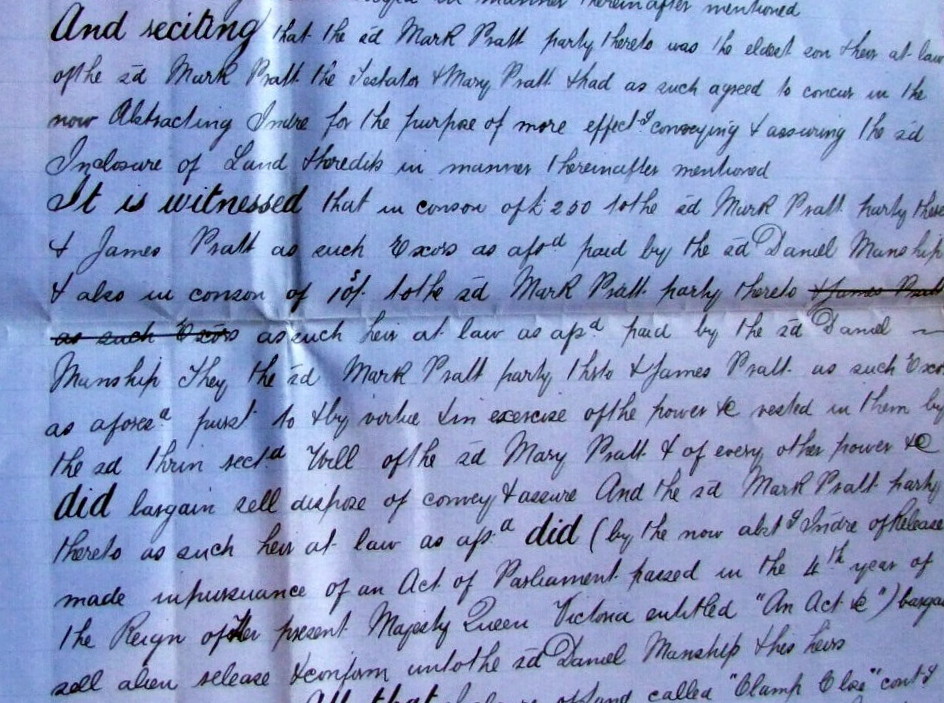
Daniel (1822 to 1901) came from a well-established family of farmers and landowners in Martham. He was married to Selena, nee Nolloth, and was a tanner as well as a farmer. Soon after he purchased Clamps Close, he set about selling off plots of land for development. Perhaps it was Daniel who was astute enough to realise that the coming of the railway in 1877 would bring development opportunities. Anyway, he sold one rood of land for £24 to Charles Braddock which is where The Wilderness was built later. The agreement mentions a plot to the east of ours that had been sold to John Newby, who was a tailor, and land to the west owned by George Self a plumber, glazier & painter. Under the agreement Charles Braddock was responsible for providing “a good substantial fence separating such piece of land from the said piece of land so sold to Geo. Self”
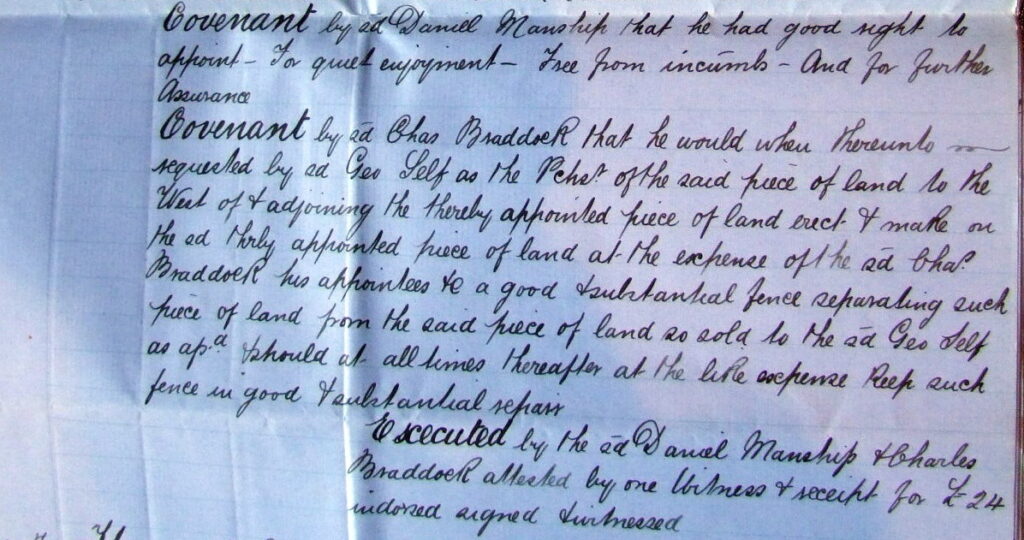
Charles Braddock came from a long established Martham family of businessmen; his father William and brother James were thatchers; his brother George was a watchmaker; his brother Thomas was a butcher and his brother Daniel, like Charles, was a farmer and brickmaker. Charles was also once listed as being a tanner.
Charles had married Eliza Forder in 1839 who also has an interesting link with the village in that her father was Richard the village schoolmaster and she grew up living at the Old Free School House (next to what is now Whittaker Carpets) just off The Green.
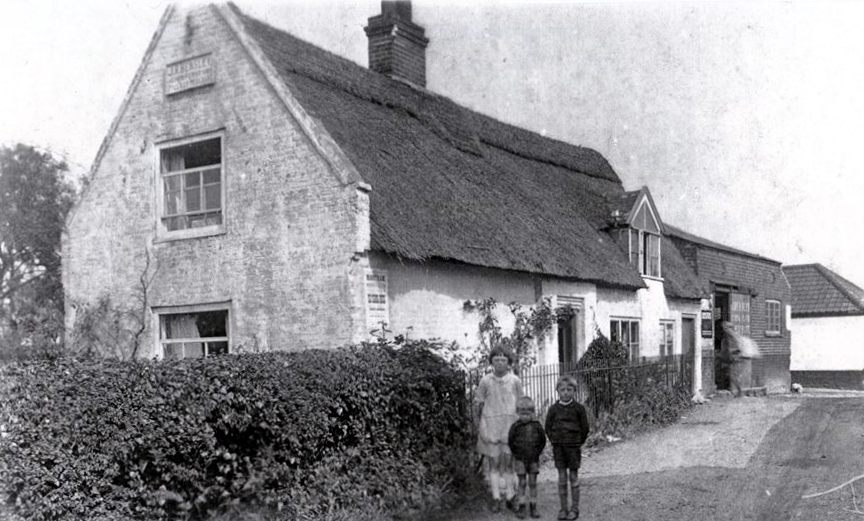
Charles died, aged 40, on 18th March 1851 and his wife Eliza, nee Forder, was the sole beneficiary of his estate under his will made on 14th December 1850. Eliza sold the plot that she had inherited to Robert & Ann Moore for £45 on 28th February 1854. The house must then have been built before 1861 because even though it was not named it appears in the 1861 census between properties owned by two people we know were neighbours. It was occupied in 1861 by Juliet Chapman, nee Moore (1783-1872) and her niece Juliet Moore (1832-1867) who I think must have been related to Robert & Ann, but I cannot prove it.
Robert & Ann continued to own Clamps Close for 13 years and on 23rd November 1867 they sold the land to Harriet Vincent but by that date they had built a house on the land. The deeds make it clear that they sold the house and land to Harriet for £220 so, allowing for the fact that they had paid £45 for the land and would have probably expected to make a profit the house must have cost about £150 to build.
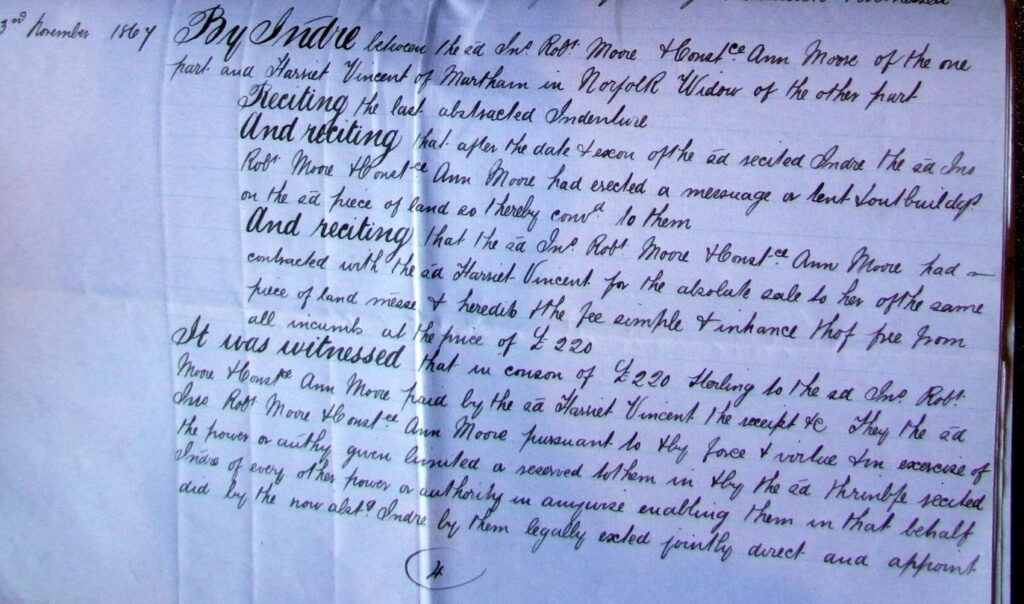
Robert and Ann did not live at our house as census records show them living at Burgh St Margaret (Fleggburgh) from at least 1851 until they died there, Robert in 1874 and Elizabeth in 1886. Ironically even though they had spent most of their adult life living at Fleggburgh they were both buried in one of the largest sarcophagus’ in Martham graveyard at section F, plot M6. They had spent most of the early married life at Martham when Robert was a grocer, draper and farmer.
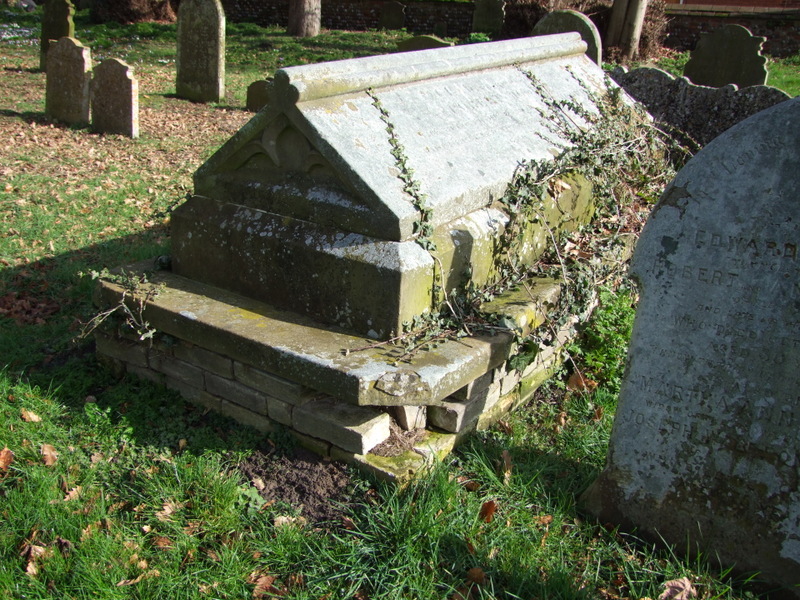
Harriet Vincent, nee Read, was a widow by the time she bought our house from Robert & Ann Moore. She was the wife of John Vincent and they had married at St Mary’s on 9th July 1835. They almost certainly lived at Vincent Cottages in Common Road near The Grange. John died in 1850 and Harriet continued to live in the Common Road house until she died in 1900 so she was another owner of The Wilderness who did not live there. She was variously described in census returns after the death of her husband as being a farmer/landowner /living on her own means. In 1871 she even had her own servant. Part of her income must have been rent from tenants. One of those was a Juliet Chapman, nee Moore, who was originally from Hickling and was listed in the 1861 census at Repps Road. Another was from a significant Martham family, and he was Benjamin Rising Purdy who was the tenant in April 1871. A year after the 1871 census Harriet decided to put the house up for sale by auction. The sale particulars, which gave a good description of the house, are shown below and the auction was carried out by Samuel Aldred at The King’s Arms, Martham on 21st May 1872.
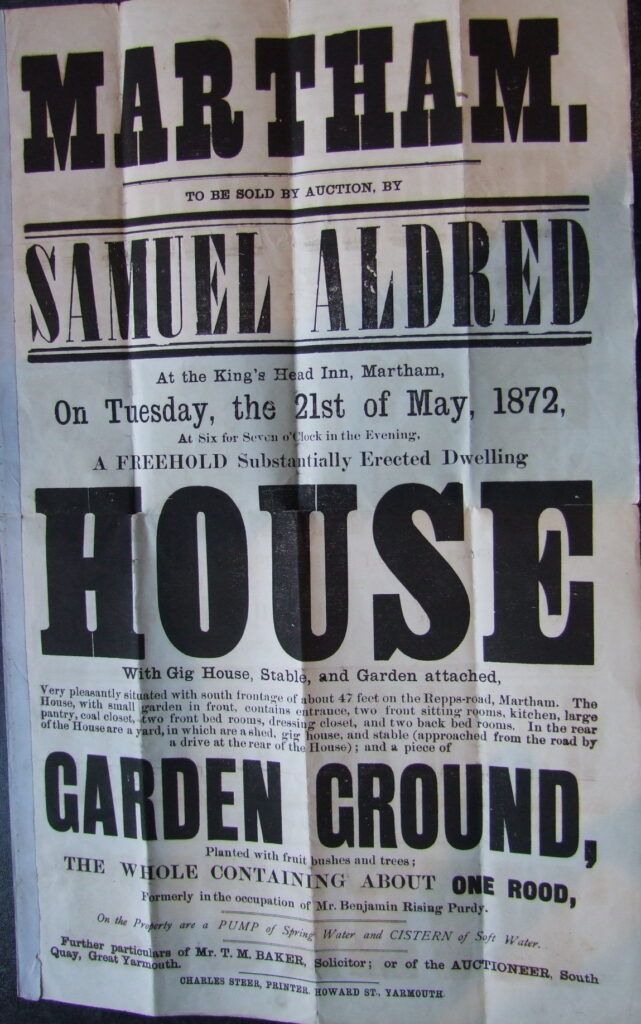
The purchaser was Robert Kittle and he paid £200 for it and continued to live there with his wife Elizabeth, nee Nichols, who died on 1st September 1880. Robert died on 27th October 1883 and he left The Wilderness to his granddaughter Selina Elizabeth Barber who had lived with her grandparents for many years including at The Wilderness at the time of the 1881 census. The word is that Selina was a keen amateur horticulturalist and she planted many of the plants and trees that can be found in the garden of The Wilderness today. Allegedly it was her who gave the property the rather ironic name of The Wilderness.
By 1891 Selina had moved to Hellingly, Sussex and had let the house for £16 per annum to William Henry Kirk who called the house Rose Cottage according to the census of that year. William was an Inland Revenue Officer. We can be sure this is the same property because of its situation in the census list and William is mentioned in the deeds to the house. The Kirk family were only there for a short while and the name reverted to The Wilderness thereafter.
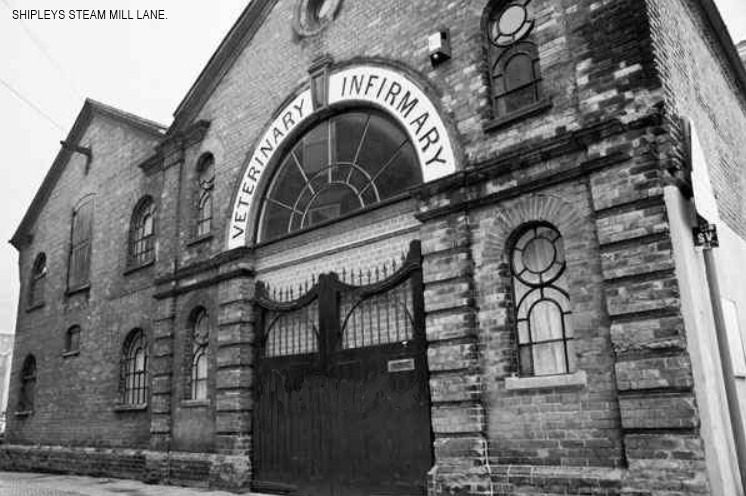
On 11th July 1892 a conveyance shows that Selina sold the house to William Shipley (1833-1904) for £230. This William was the second to have the name William Shipley out of five who rather confusingly were all called William and were very successful veterinary surgeons. This William had set up a purpose-built Veterinary Infirmary at Bridge Road, Great Yarmouth – shown on the left – and by 1892 was already extending to branches in Martham and Caister mainly looking after horses and cattle. As farmers moved out of large livestock the practice became more general providing for smaller animals like cats and dogs. Treatments were carried out in what was previously the stable.
The Shipley branch business was to last in Martham for over 70 years but the main vet to serve the partnership and who lived at The Wilderness was Henry Etridge Wilkinson (1863-1933). He was born in Newcastle and married Mary Ann Womack there in 1892. It is more than likely that they moved to Martham to work for the Shipley’s as soon as they had purchased the property because Henry & Mary’s son, also named Henry, was born there in July 1893. Sadly, that son was killed in WW1 at Gallipoli in 1915. Henry Snr. continued to be the vet at The Wilderness until his death on 23rd December 1933. Mary continued to live there until at least 1939 when she was listed in the register of that year. Mary died on 10th April 1946 and is buried with her husband at section H, plot K11 of St Mary’s Church.
The five generations of William Shipley vets at both Great Yarmouth and Martham continued but as each died and sons followed fathers a complex partnership grew up often managed by trustees and other partners. By 1956 a Joseph John Low had become a partner but it is not clear that he ever worked from or lived at Martham. On 31st December 1963 a conveyance tells us that William Shipley, the fifth, (1930-2013) and Joseph John Low sold the business along with The Wilderness to Leonard Aubrey Evans. The purchase by him was subject to him continuing to provide the duties of a vet at The Wilderness as a partner carrying out business under the firm’s name of “W Shipley & Son” for which he paid £4,500. Leonard retired on 31st December 1973 and the Shipley partnership was finally dissolved the following year. Leonard died on 19th January 1977 and the property passed to his wife Joan Mary Evans.
In 1984 Mrs Evans sold the property to Paul & Sarah Chapman. They in turn sold it in December 1995 to the present incumbents Bob and Mary Porteous.
Summary of owners:
Clamps Close as a whole:
- 1792 and before, the earliest known owner of Clamps Close was Francis Columbine of Norwich.
- John Ellis and John Carrier 1792 to 1822.
- Mark Pratt 1822 to 1832 when he died.
- Mary Pratt, the wife of John, 1832 to 1842 when she died.
- Executors of Mary Pratt 1842 to 28.12.1843.
- Daniel Manship 28.12.1843 onwards but sold individual building plots.
Plot only on which The Wilderness later stood:
- Charles Braddock 26.12.1849 to 18.3.1851 when he died.
- Eliza Braddock, wife of Charles 18.3.1851 to 28.2.1854.
- Robert & Ann Moore 28.2.1854 to 23.11.1867 during which time The Wilderness was built before 1861.
- Harriet Vincent from 23.11.1867 to 21.5.1872 as the owner but did not live there.
- Robert Kittle from 21.5.1872 to 27.10.1883 when he died.
- Selina Barber (Robert’s granddaughter) from 27.10.1883 to 11.7.1892.
- The Shipley Vets Partnerships from 11.7.1892 to 31.12.1963.
- Leonard Aubrey Evans from 31.12.1963 until his death on 19.1.1977.
- His wife Joan Mary Evans from 19.1.1977 to 1984.
- Paul & Sarah Chapman from 1984 to December 1995.
- Bob & Mary Porteous from 1995 to date.
Some of the known tenants were:
- c1861 Juliet Chapman, nee Moore (1783-1872) and her niece Juliet Moore (1832-1867).
- c1871 Benjamin Rising Purdy and his wife Elizabeth (who was the half sister of Eliza Braddock, nee Forder, and another daughter of the schoolmaster Richard Forder).
- Henry & Mary Wilkinson from 1893 to 1933 when Henry died and probably thereafter Mary alone until at least 1939 and possibly 1946.
Dozens of people walk along Repps Road daily taking little notice of a series of houses that are about 160 years old. Peel back the fabric of time and the usage and occupiers can illustrate part of the history of Martham. If you own a property of a similar age and would like help tracing its past to share here please contact me; it may be a fascinating journey just like it has been for The Wilderness.